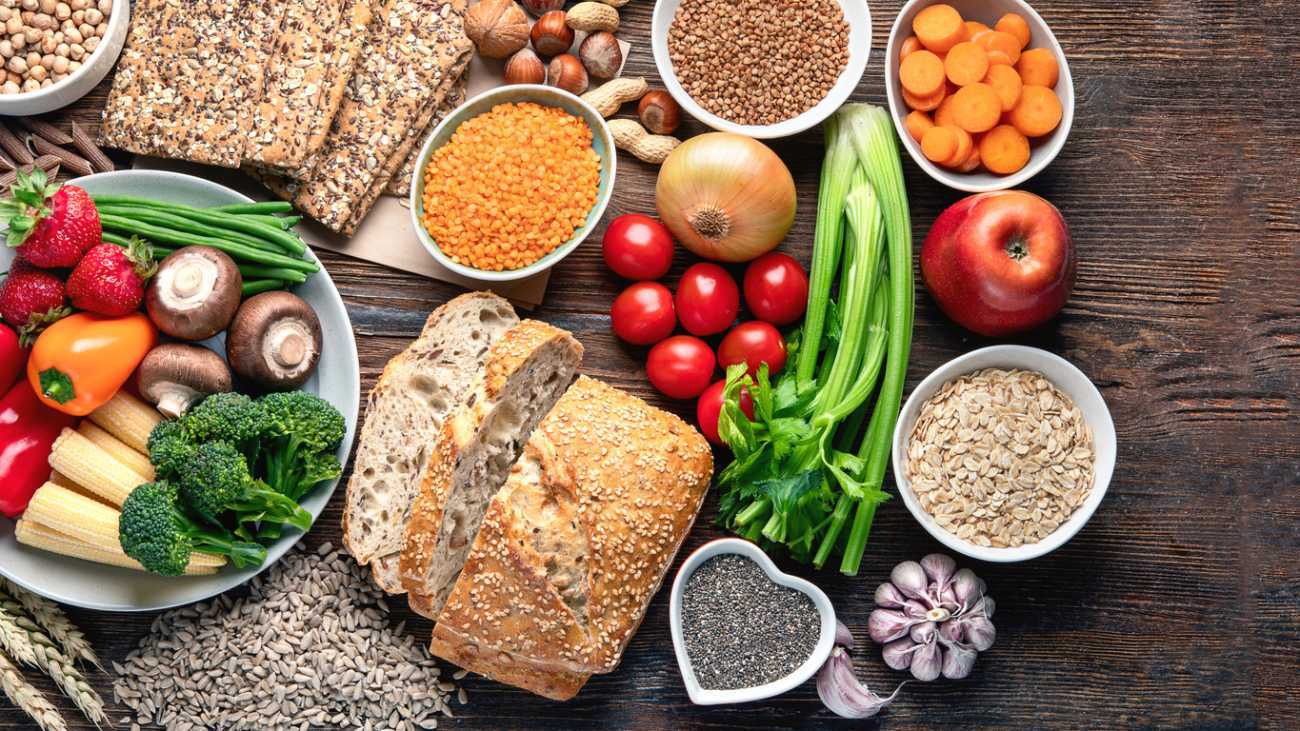- Diverticular disease is a condition where small bulges (called diverticula) form in the wall of the large intestine (bowel).
- A diet low in fibre increased the chance of developing diverticular disease.
- A diet high in fibre, being active and drinking plenty of water help reduce the problems from diverticular disease.
- Short-term management of painful flare-ups of diverticular disease may need a low-fibre diet. Long-term, a high-fibre is recommended.
3 minute read
Diverticular disease is a common disorder of the digestive system. It happens when small bulges or pockets form in the wall of the large intestine (also called the bowel or colon). These pockets are called diverticula.
Diverticular disease is very common. One in three Australians over the age of 45 have diverticular disease. For most people, it doesn’t cause any symptoms.
What causes diverticular disease isn’t known. Not eating enough fibre is thought to be one reason. A low-fibre diet leads to increased pressure inside the bowel, especially during the straining motion of passing a stool. This increased pressure causes the diverticula to form in weaker areas in the bowel.
A high-fibre diet helps to prevent constipation and the formation of diverticula. Regular exercise and drinking plenty of water also helps.
Diverticulosis versus diverticulitis
Diverticulosis is when you have bulging pouches (diverticula) in the lining of the bowel wall. Most people won’t experience any symptoms from this. If a lot of diverticula develop, it can affect the working of the bowel and cause a range of symptoms including:
- abdominal pain and bloating
- constipation and diarrhoea
- flatulence (gas).
To manage diverticulosis we recommend gradually increasing the amount of fibre you eat to help improve bowel habits. This helps to make stools softer and easier to pass. Sometimes a fibre supplement may be recommended.
Diverticulitis is very different to diverticulosis. It is when the diverticula become infected and inflamed. This can be very painful. This can result in:
- sharp intense pain in the abdomen
- nausea and vomiting
- fever
- cramping and bloating
- loss of appetite
- blood in the stool.
Diverticulitis is often a medical emergency. If you have these symptoms, they should be investigated by your doctor to rule out other more serious problems.
Diverticulitis is usually treated with antibiotics and some people never experience another attack. If you have more than one attack of diverticulitis there are risks of further problems.
During an acute attack of diverticulitis, a liquid low-fibre diet may be recommended. Once your symptoms improve, you can gradually add solid food back to your diet.
Living with diverticular disease
A high-fibre diet is recommended for people with diverticular disease to reduce the chance of developing the acute condition of diverticulitis. Learn more about fibre.
A high fibre diet includes:
- two servings of fruit including skins and seeds each day
- five servings of vegetables each day
- choosing wholegrain breads and cereals over more refined grains
- including legumes such as lentils, chickpeas and kidney beans.

Fibre adds bulk to stools, making them easier to pass. It is also important to drink plenty of fluids, at least two litres per day, to ensure the stools are moist and soft. People with diverticular disease can also use a fibre supplement such as psyllium to make their stools easier to pass.
Being active helps to promote normal bowel habits and reduces pressure inside your bowel. Try to exercise for at least 30 minutes on most days of the week.
You may have heard advice that people with diverticular disease should avoid small, sharp and hard foods such as nuts, seeds and corn. The thinking is that there is a risk of undigested remnants of these foods lodging in the diverticula and causing inflammation. But evidence to support this dietary recommendation is poor. That means that it isn't necessary to avoid these types of foods unless you are experiencing a painful flare up of diverticulitis.
Foods like nuts and seeds have fibre-like effects and contain important nutrients. That means that they could help to prevent diverticular disease rather than make it worse.
If you are recovering from a painful flare-up of diverticulitis you may need to go on a lower fibre diet until the pain and inflammation improve. Once resolved, you can slowly go back to your high fibre diet.

For personal assistance with modifying your diet because of diverticular disease, contact an Accredited Practising Dietitian (APD).
We recommend seeing a dietitian if you:
- have been diagnosed with diverticular disease and want some support on dietary management of this condition
- are struggling with any of the symptoms of diverticular disease
- need nutritional advice to help ensure you're meeting your individual nutrient requirements
- would like advice on ways to have more high-fibre foods in your diet
- would like personalised advice and support from a professional.
Accredited Practising Dietitians (APDs) are university-trained nutrition experts. They can help you with personalised, easy-to-follow and evidence-based advice.
APDs are Australia's most trusted dietetics professionals.
- A diet high in fibre helps reduce the problems from diverticular disease. Good sources of fibre include wholegrain breads, oats, fruits, vegetables and legumes.
- Aim for at least 30 minutes of physical activity each day - exercise can help reduce the risk of diverticulitis.
- Drink plenty of water throughout the day.